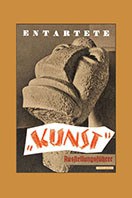The New Observer
March 6, 2016
A concert-going crowd last weekend in Cologne, Germany, jeered to a halt a performance by Iranian “virtuoso” Mahan Esfahani of an infamous piece of degenerate “minimalist” music by American “composer” Steve Reich.
The crowd’s behavior, condemned by the Cologne Philharmonic management as “stunning,” is unprecedented, and German media have tried to link the reaction to the New Year’s Eve mass sex attacks by nonwhite invaders in that city.
According to a report in the Kölner Stadt-Anzeiger newspaper, Cologne’s music scene was in an “uproar” this week over the hostile reaction from the crowd during Esfahani’s solo performance of Piano Phase, composed by the American Jewish “minimalist pioneer” Steve Reich in 1967.
Philharmonie Köln management said it was “stunned at the unforeseen reaction to Sunday’s concert. We expect artists to be treated with respect,” and insisted that Cologne’s prime concert venue would remain a “forum for cultural diversity.”
The “music” consists of two identical lines consisting of twelve notes (E4, F#4, B4, C#5, D5, F#4, E4, C#5, B4, F#4, D5, C#5) played over and over again for nearly twenty minutes, on two identical instruments (in Esfahani’s case, a replica 18th-century harpsichord, combined with a simultaneous tape recording “in a version approved by the composer”). The two lines of music are at first played synchronously, but slowly become out of phase with one another when one of them slightly speeds up.
The uproar came during the second part of the concert, when the crowd—consisting mostly of paid subscription concertgoers, objected loudly to being subjected to the cacophony created by Esfahani.
He was first challenged by catcalls such as “speak German” as he used English to explain how he intended to play the piece, and then, as the awful noise started, whistles, jeers, and slow clapping followed. Hundreds left the chamber in disgust.
Esfahani, who had been wearing headphones to synchronize his live playing of the harpsichord “against” the pre-recorded audio track, said he broke off after about eight minutes because audience reactions had become “unbearable” and he had noticed that audience factions were yelling at each other, with a few people even crying.
“The hall at this point was more or less in pandemonium on a scale that I’ve never seen in a concert hall for classical music. I fortunately had a microphone on stage and decided that, well, it was time to use it,” he said.
He then stopped the performance, and, in his own words, proceeded with a program which consisted of “pleasant music” for the remaining “older … educated middle class.”
“I finally said: we’re going to proceed with the concerto by C.P.E. Bach,” he said, referring to the afternoon’s closing item, Bach’s concerto in D-major for harpsichord and strings.
A one minute and ten second extract from the Steve Reich “composition” can be seen below. The sound of this carrying on for nearly twenty minutes would be enough to provoke a riot anywhere.
 See also: Degenerate Art: The Exhibition Guide in German and English—the original guide to the famous 1937 “Degenerate Art” exhibition in Germany, in full German original and English translation.
See also: Degenerate Art: The Exhibition Guide in German and English—the original guide to the famous 1937 “Degenerate Art” exhibition in Germany, in full German original and English translation.
In 1937, Germany’s Nazi government staged an exhibition in Munich entitled “Entartete Kunst”—the official designation given to all “modern art” which was not strictly classicist or realist in nature. The exhibition was not merely designed to illustrate what the Nazis deemed “bad art,” but also had a political purpose.
“Modern art” was deemed to be part of the overall assault on “German art” and culture by a Bolshevist—and largely Jewish—movement of “artists” who were working in tandem with the Communist movement to destroy German, and Western, civilization. Click here for more details.

